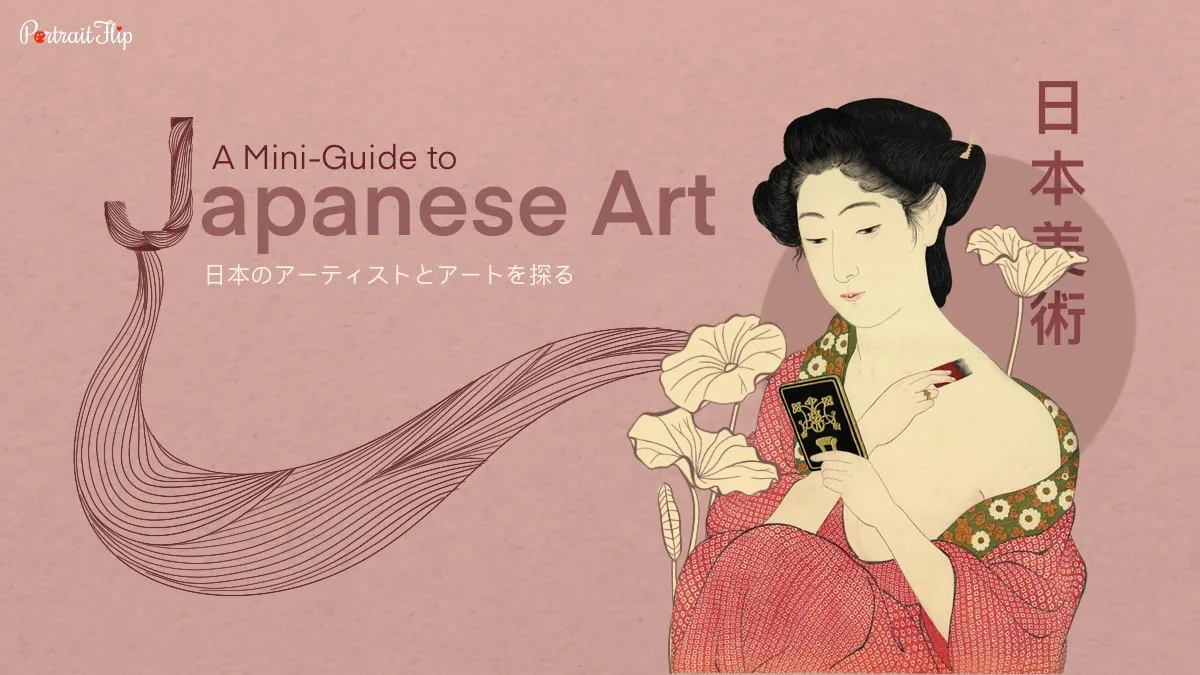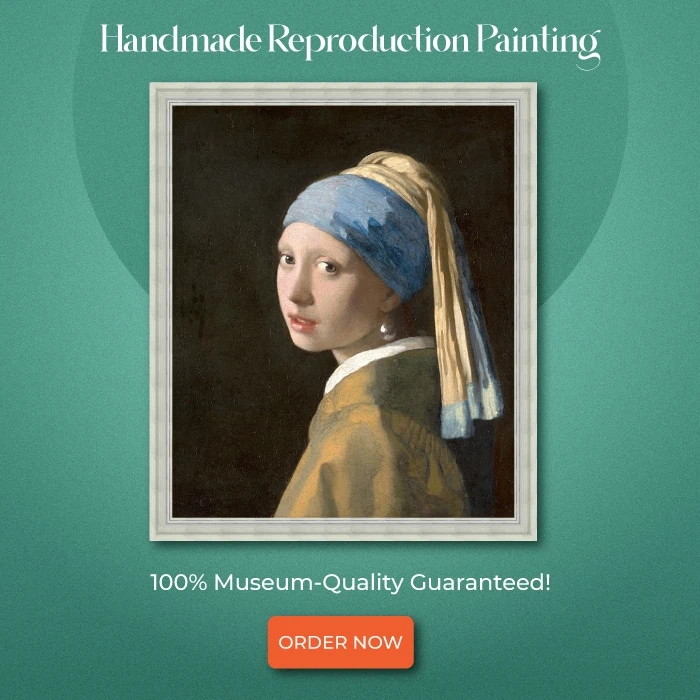Japan is known for its wondrous and brimming culture and art!
Be it technology or art we know that no one else does it like the Japanese!
Enormously rich in art and culture, there is a lot to know about the roots of Japanese art and its evolution to this day.
The brilliance of art in Japan is so great that it has had an influence on several famous artists around the world!
Aren’t you curious to know about the art from Japan and what makes it so special?
In my research, I found that the art history of Japan is deeply engraved with nature and their culture: Therefore we have a lot to unfold!
In today’s article I have curated a brief history of Japanese art, along with traces of its evolution through the years.
Along with this, we will also be exploring some artworks of famous Japanese artists in the art community!
Table of contents
A Short History of Japanese Art
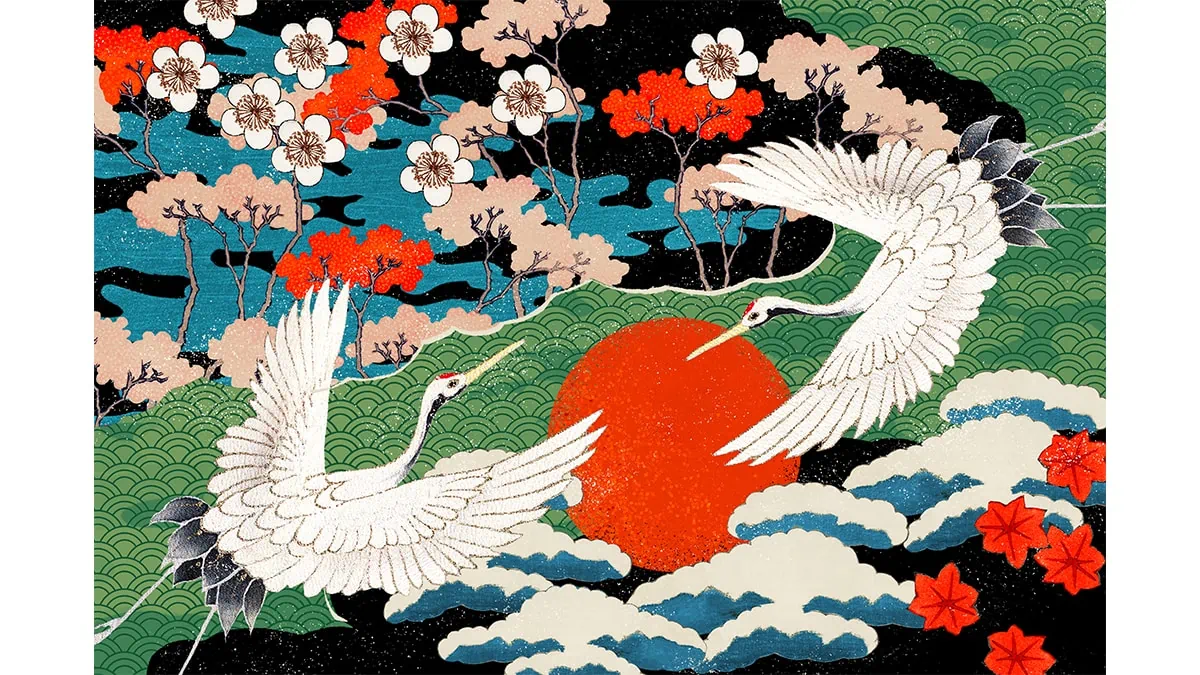
Art in Japan is very closely linked to nature and the symbols they find in nature!
This is why a lot of famous Japanese paintings are influenced by nature itself, and well, depicted wonderfully indeed.
Art in Japan has evolved at so many levels that their contemporary art is something that is most talked about among artists!
According to sources, nature in Japan was extremely inclined to faith.
Yes, the religion we know today as Shinto is known to be one of the oldest and most believed faith among the Japanese.
Conforming to the Shinto religion, it is believed that deities live in different parts of nature!
In trees, flowers, and yes, definitely, the mountains!
This is also why you will see a lot of art attempts and versions of Japanese paintings of Mt. Fuji.
Japanese art is not just only about landscape paintings but also divineness that is intertwined with it.
Looking into any history of painting, we see that nature is somehow connected to it– either the influence or the reason.
Did you know that the oldest sustained Japanese art was made on a Japanese silk screen?
This painting is also said to have a lot of Chinese influence, even though the artist is not likely to have visited China.
What does that mean?
Chinese art style had also somehow trickled down to art in Japan changing the art history of Japan.
Apart from sketching and painting in different mediums, Japanese art also encouraged artists to create ceramics and architectural work.
Now that we have a brief idea, let us dive more into the culture that helped in creating Japanese artworks!
The Influence of Zen and the Tea Ceremony

The tea ceremony plays a vital role in Japanese culture and has, in fact, greatly influenced the evolution of art in Japan through the years!
Before the 16th century, well-off families had the privilege to host gatherings where they would showcase their fancy Chinese tea sets.
However, after the 16th century, people started choosing a much simpler version of this tea ceremony.
It is in fact from this tea ceremony that the wabi-sabi style of Japanese art was formed, which was founded by Sen Rikyu, a tea master.
The concept of wabi-sabi is derived from Zen.
Yes, Zen philosophy is not easy to derive, but in simple terms, it can be understood as the philosophy of imperfection and impermanence.
Therefore, while following wabi-sabi technique, it refers to using more earthy, natural tones, and away from vibrant hues.
The wabi-sabi art that came from this tea ceremony of art history of Japan has also influenced ceramics, woodwork, textiles, incense, metalware etc.
Suggested Read: Ancient Greek Paintings
The Japanese Samurai Art

Can you think of Japanese without thinking of Samurai?
Yes, even this greatly skilled martial art from Japan has heavily influenced the production of Japanese art.
Fun fact: Samurai fighters were not just skilled in combatting, they were trained for more than that.
Let’s go back to premodern Japan!
Samurai were the warrior class in the Japanese community, but they were not mere fighters and soldiers.
The samurai were also the responsible bearers of the art and culture of Japan.
They were literate and honed with artistic skills, apart from being disciplined and fighter.
This is where the samurai art in Japan is born.
As a samurai, you are expected to follow the arts of war and culture, which are known as the bu and bun.
They are ardent followers of the saying bunbu-ryodo which translates to “literary arts, military arts, both ways”.
Even among the Samurai community, you would find Japanese artists, writers, poets and collectors.
Who else would know better about movement in art?
“A true warrior makes mastery of many art forms besides that of a sword.”
This quote by Miyamoto Musashi, from his book “Book of Five Rings”, sums up everything that samurai art is about.
Did you know that the samurai class was not just given access to men, but also to women?
With this, the samurai art rose, and this famous art in Japan focussed on combat.
This included showing the design, armor, weapons, and craftsmanship— there was a story each samurai art had to unfold!
The Emergence of Edo Beauty in Ukiyo-e Prints
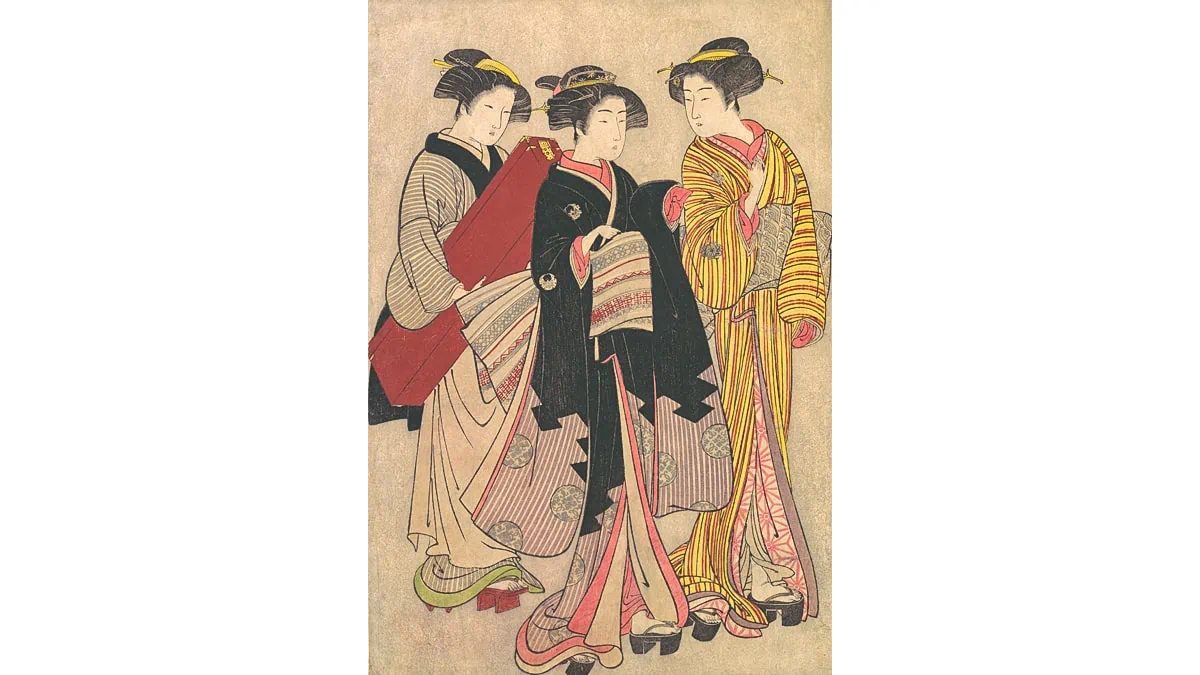
Art in Japan saw a whole new perspective of Japanese artists during the Edo era, which was roughly from 1615 to 1868.
Some extraordinary and famous Japanese art paintings were created during this period.
It was a time of prosperity, when cities arose, and with it they also established social classes among people concretely.
It is in the Edo era that the ukiyo-e prints found their popularity through the merchant class, who were also known as the chonins or townspeople.
So, what is this ukiyo-e?
Its literal translation means “pictures of the floating world”, which makes sense in context to the string of islands, Japan!
Ukiyo-e is created with brilliant woodblock prints.
These prints majorly highlight fashion, beauty and the cultivated urban lifestyle!
It was also a coming of age technique that emerged and flourished when advanced printing came in Japan.
These Japanese ancient paintings were all about portraying the extravagant, fancy lifestyles of one particular class.
It is also during this period that ukiyo-e paintings of courtesans emerged, which were called bijinga.
Bijinga translates to “paintings of beautiful women”.
You see, the ukiyo-e prints and Edo beauties spread everywhere during this period, which became a whole new sensation!
The Future of Japanese Contemporary Art

While we have a good idea about ancient Japanese paintings, let us look at how Japanese artworks are doing in the contemporary world.
How has the Japanese artist evolved?
Art in Japan only got better through the years across different mediums.
When you think of Japanese contemporary art, what comes to your mind?
I’d say manga, sculptures, abstract paintings, art in fashion, photography and the list is endless.
Among the Japanese artists, they saw a rise in famous female painters, who took Japanese artworks to another level!
Contemporary Japanese artists are known for thinking out of the box and creating something unique!
Famous Japanese art pieces created by them are extraordinary artwork.
Did you know they would create art out of random objects they take from everyday life?
Although contemporary art in Japan can seem very different from Japanese ancient paintings, they do have a link!
A lot of modern Japanese art was influenced by ancient Japanese paintings and how they used their art tools.
I personally feel that art in Japan will still bring more innovative artwork into the world that will stand out from the rest.
Suggested Read: The Philosophy of Traditional Art vs. Digital Art
5 Famous Art in Japan and their Artists!
1. Reading in Bamboo Grove (1446)

Reading in Bamboo Grove by Tensho Shubun is one of the earliest Japanese art that is talked about.
This ancient Japanese art was made on the surface of a scroll.
The scroll consists of poetry and along with it a landscape painting.
Although this Japanese painting is identified to be made by Shubun, who was a Zen monk, it is hard to confirm.
This is because many other Zen monks who came across this scroll added their own inscriptions on it.
But this painting is very relevant because of the period it is made in, and reflects Shubun’s art style.
2. Sekiya and Miotsukushi (1631)
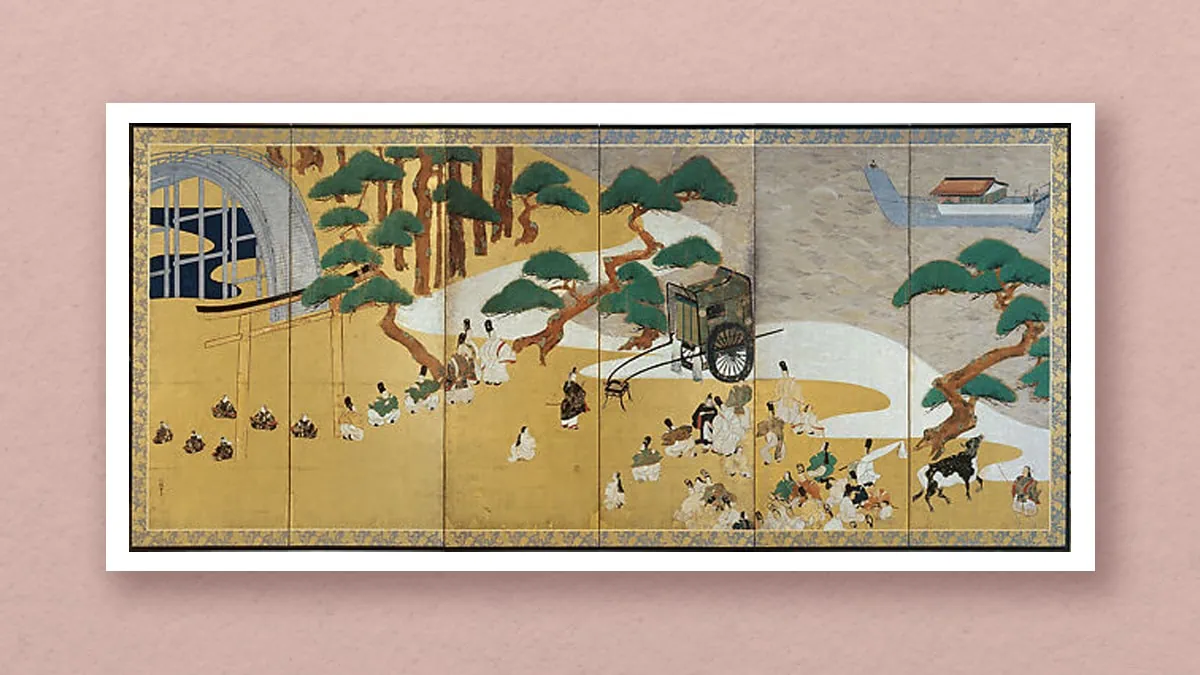
This ancient Japanese art by Tawarya Sotatsu was completed in the year 1631.
In fact, this particular famous Japanese painting is known to be a masterpiece of the artist.
The style used in Sekiya and Miotsukushi is the traditional genji style.
The genji style incorporates miniature Japanese drawings on a huge scale.
This technique was used by artists to emphasize the visual storytelling aspect of art in Japan.
Wondering how this was done? — by using simplified geometry.
The painting has two screens where each screen depicts a story.
This Japanese painting exhibits the brilliance of the artist, Tawarya Sotatsu.
Apart from being an extraordinary Japanese artist on canvas, Sotatsu was also a furniture designer and a part of the Rinpa school.
3. Three Beauties of the Present Day (1793)

Japan found a new wave of art sensation with the arrival of this particular Japanese art.
The most unique aspect of it is that the three women depicted in the painting are situated in a triangular formation.
The women were celebrities from that particular period.
All three women have graciously worn some gorgeous clothing and jewelry which are believed to be their family crest and heirloom.
The usage of “Present Day” in the painting’s name suggests that this art was considered modern and fashionable at that time.
This can also be noticed through the way their faces were painted— done with utmost style and poshness, which was not common then!
The popularity of this form of Japanese art peaked in the 17th to 19th centuries.
The theme and subjects of these paintings usually focused on everyday life.
The artist Kitagawa Utamaro, who was born in the Edo era was known to be one of the most famous Japanese artists.
Utamaro is known for playing with shadow and light and his art was also well accepted and renowned in Europe.
Suggested Read: 17 Famous Portrait Painters- Incredible Portraitists Who Reign The Art World!
4. The Great Wave Off Kanagawa (1829)

The Great Wave off Kanagawa is one of the most famous Japanese art and a personal favorite!
Completed in 1829, this Japanese painting was created by Katsushika Hokusai.
It is also the first print from a very famous series called “Thirty Six Views of Mount Fuji”.
The painting depicts Mount Fuji in the background, but at the focal center of the painting.
But it is impossible to not notice the gigantic wave hovering over three fishing boats, depicting the chaos and wrath of the sea.
This painting gained a lot of acknowledgement and attraction from Europe and even called it Japonism!
Even the famous post-impressionist artist, Vincent van Gogh was a huge admirer of Hokusai’s work.
Van Gogh described the painting to be “emotionally terrifying”, because of the effect it had on the viewers.
Do you think it could be considered as expressionist art?
Suggested Read: 20 Most Famous Expressionist Artists And Their Amazing Contributions!
5. Smooth Nightmare (2000)

Takashi Murakami is known to be one of the most famous Japanese artists till this day!
Modern art in Japan saw a new wave of creation through Murakami’s work.
He was most famous for his pop art movement!
I’d call this Japanese artwork a bit of an abstract art, because you can see human-like mushroom figures.
The eyes on the mushrooms add personification in this Japanese painting.
This vivid representation by Murakami was a painting like never before among the Japanese artworks.
This representation was known to be “Superflat”, which meant that the concept of space was suspended.
Imagine owning a replica of such an amazing painting!
You can now explore PortraitFlip’s Reproduction Painting services to create a replica of your favorite painting!
Author’s Note
Hello Readers,
I am sure we have some manga fans among our readers!
We are always awestruck by the several amazing things Japan does with their art, culture and technology.
With that belief I also hope you enjoyed reading this blog!
If you have any thoughts or concerns, please reach out to us in the comment section below!
Until next time,
Cheers xx
Frequently Asked Questions
The Great Wave Off Kanagawa, completed in 1831, is the most famous art in Japan.
Art in Japan captures the elements of nature so well because of their understanding of the natural world being a source of spiritual connection.
“Kakemono” (hanging thing) or more commonly known as “kakejiku” (hung scroll” refers to Japanese scroll art.



